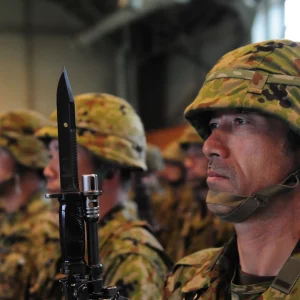
Fifty-four years after diplomatic fallout, the United States and Cuba are finally ready to let bygones be bygones. In his State of the Union address on January 20, 2015, U.S. President Barack Obama called for Congress to reestablish diplomatic relations and to end the trade embargo with Cuba, “ending a policy that was long past its expiration date.” As part of these efforts to normalize relations, the U.S. is negotiating with Cuba to open an embassy in Havana.
Yet, to what degree will Obama’s willingness to reach out to Cuba translate into congressional policy? So far Congress appears to be working on lifting all travel bans to Cuba. This is, however, only a small part of the larger story. Legislative battles will wage in the coming months, as members of Congress debate on the extent to which the U.S. should reestablish full diplomatic ties with Cuba. Currently, the Republican-controlled Congress does not seem to be receptive of ending the trade embargo, encumbering Obama’s efforts.
Nonetheless, Obama’s actions provide a historic turning point to the U.S.-Cuba narrative. The past 10 presidents before Obama refused to broach the topic, leaving this damaged relationship one of the final remaining legacies from the Cold War. Ever since Fidel Castro took over power in 1959 and aligned the island with the Soviet Union, the U.S.-Cuban relationship turned sour. President Dwight D. Eisenhower imposed the first trade embargo in 1960 and broke off diplomatic ties the following year. Amidst the ideological struggle of the Cold War, President John F. Kennedy launched the catastrophic Bay of Pigs operation to overthrow Castro in 1961 and the next year faced the Cuban Missile Crisis over the Soviet’s attempt to install nuclear warheads on the island. Nonetheless, despite the end of the Cold War over two decades ago, the United States and Cuba never reconciled. The United States “built relations with Communist nations like China and Vietnam, [but] Cuba remained one of just a few nations, along with Iran and North Korea, that had no formal ties with Washington.”
Finally, Obama brought up the Cuban story. After his re-election in 2012, he decided to prioritize Cuba in his foreign policy agenda. One of the greatest obstacles was the Cuban imprisonment of Alan P. Gross since 2009. An American government contractor, Gross was sentenced to 15 years in jail “for trying to deliver satellite telephone equipment capable of cloaking connections to the Internet.” In response, Obama held secret negotiations with the Cuban authorities, which led to Gross’ release, as well as the returning of three imprisoned Cuban spies home from the U.S.
Full normalization of relations between Cuba and the U.S. would also inevitably create repercussions affecting immigration. The U.S. has long abided by the “Wet-Foot, Dry-Foot” policy since 1995, in which Cubans who manage to reach U.S. soil automatically qualify for residency after a year, while those who fail to make it are returned to Cuba. Will this divisive policy finally end as diplomatic ties thaw? Speculations about the end of this policy spread have like wildfire in the wake of recent developments, thereby sharply increasing the number of Cubans attempting to migrate across the gulf between December 2014 and January 2015. Captain Pat DeQuattro wrote on the website of the Council of Foreign Relations, “Although actual U.S. policy changes regarding Cuba have not yet been announced or implemented, there is a perception in Cuba that such changes are imminent.” How much truth lies behind this rumor? According to Alex Lee, the senior American diplomat at the migration talks with Cuba, there is little truth to the speculations. Nonetheless, even though the policy would “very much [remain] in effect” in the short-run, the U.S. may still see an influx of immigrants from Cuba given this false perception.
The easing diplomacy also encourages the bidirectional flow of people. Many Americans visit other states not only for sightseeing but also for medical tourism —when they “travel abroad for surgery or other medical care, often because the treatment is less expensive there or is not available where patients live.” Observers speculate that Cuba would be an appealing destination for medical tourism. After its revolution in 1959, Cuba has invested well in its healthcare system and has become known as one of the few states to provide mostly free, high quality services to its people. Additionally, even for U.S. citizens, Cuban medical care would still be cheaper than other alternatives in the U.S. or in current popular destinations such as Costa Rica, Canada, Singapore, the United Kingdom, or Israel.

Among all possible implications, Cuban-U.S. relations will yield the greatest impact on both nations’ economies. After all, Cuba decided to reach out to its northern neighbor due to a potential credit default in its primary economic partner, Venezuela, in order to find new markets abroad for its goods. In particular, Cuba seeks to gain benefits from the lifting of the economic embargo. For American corporations, Cuba serves as a “nearby, untapped market of 11 million people.” In the agricultural industry, American food companies can finally bypass export restrictions and gain from Cuba’s status as the “largest importer of wheat in the Caribbean.” Additionally, financial services would be extended from America to the island across the gulf for the first time in over half a century. U.S. banks can finally conduct business with Cuban customers and Cubans living in the U.S can send money home easily. Lifting the embargo on Cuba would have to be debated in the U.S. Congress, but if the legislative approval passes, both the U.S. and the Cuban economies would have new economic resources to tap into.
Finally, how much will diplomatic normalization pressure Cuba to adopt a more democratic system of governance, one which respects political rights within its borders? To date, Cuba’s record of human rights appears spotty, as the state arbitrarily detains outspoken opponents of the regime and arrests artists who use artwork as a form of subversive political expression. Nonetheless, several Cuban activists still cling to the hope that “the détente will result not only in economic benefits but also broader rights.” Unfortunately, the prospects may remain bleak, as a substantial group of activists and artists begin to cast doubt on such far-fetched optimism. Mr. Del Risco, a Cuban academic recently stated “the United States has too much faith in the power of the economy and of tourism to bring political change. Just because the two countries have contact, I don’t think there will be some magical opening.” Politically, it is unlikely for the Cuban government to grant its people more liberties, as it seeks to gain economic benefits more than political change from reestablishing ties with the U.S. After all, the Cuban regime is largely authoritarian and President Raul Castro is reluctant to relinquish power and control.
In the fifty-four years of economic isolation, both nations have suffered socially and especially economically. The liberal shift in foreign policy signals newfound opportunities for large corporations and Cuban immigrants. Even though these developments may be more economic than political, it definitely constitutes a win-win situation for both nations. The reestablishment of diplomatic ties between the U.S. and Cuba has come three decades too late since the end of the Cold War in 1989 — but it is better late than never.




